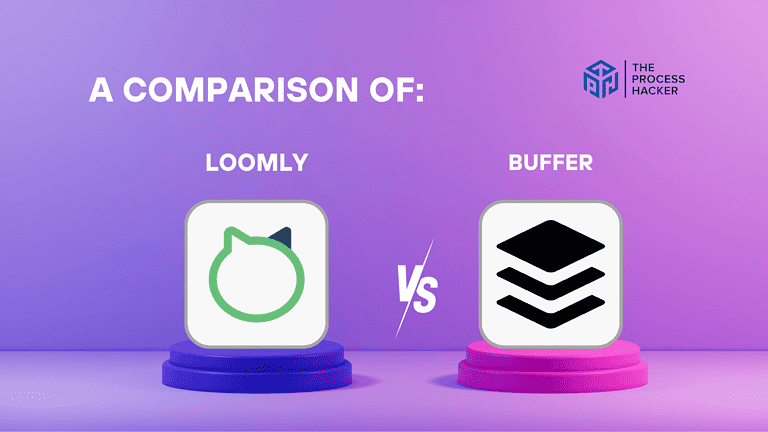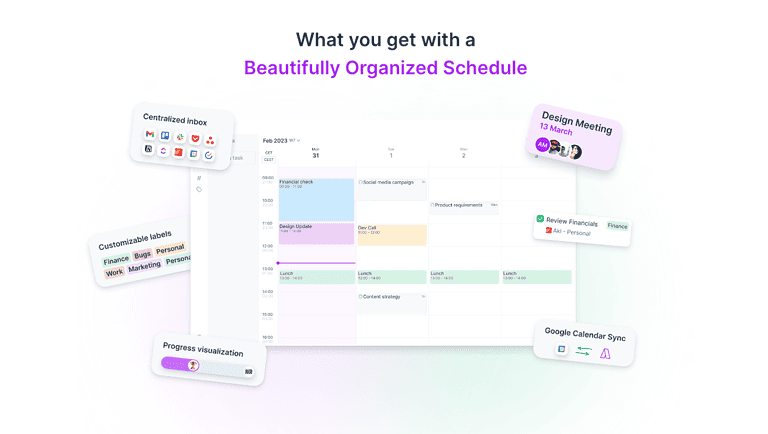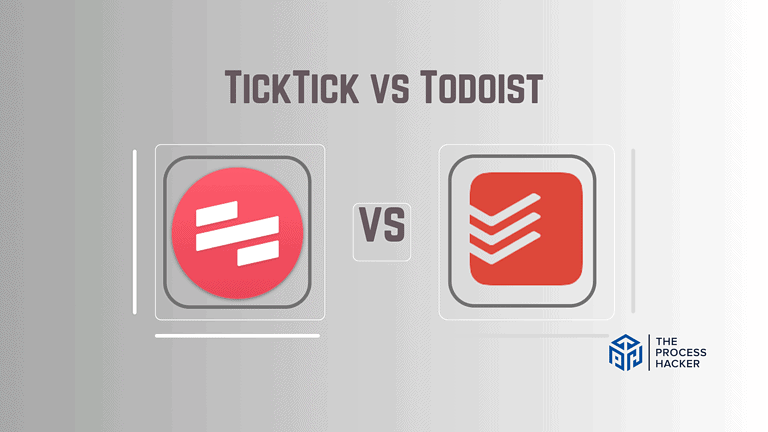Email Marketing KPIs: The Ultimate Guide To Improving Your Email Marketing Campaigns
Struggling to improve your email marketing campaigns?
Have you ever felt something missing after setting up an email campaign? Chances are, you’re not leveraging the right KPIs to get maximum results. This ultimate guide to Email Marketing KPIs can help ensure all your email campaigns reach their full potential.
Learn how to track and analyze key performance indicators such as engaging subject lines, open rates, click-through rates, conversion rates, or unsubscribe rates – so that no matter what industry your business is in, you will always be on top of your game!
Plus, with actionable tips and tricks from successful email marketers who have used these strategies for years – mastering the art of email marketing has never been easier.
Buckle up and get ready to improve your email marketing campaigns!
What Are Email Marketing Metrics or KPIS?
Email marketing metrics or key performance indicators (KPIs) are numbers that help you gauge the success of your email marketing campaigns.
They’re essentially the bread and butter of your campaign analysis, providing you with quantifiable data on aspects like open rates, click-through rates, conversion rates, bounce rates, and more.
Understanding these metrics isn’t just an option. It’s necessary to make your email campaigns more effective and achieve better results.
What Is An Email Marketing Campaign?
An email marketing campaign is a series of emails that a business sends to a specific group of people or target audience, typically to promote a newsletter or offer.
With everyone now having access to powerful Internet service providers, these emails are designed with a particular purpose, whether promoting a new product, sharing company news, providing free webinar training, or simply nurturing a relationship with customers.
Why Should You Measure Key Email Marketing Metrics?
As an email marketer, you must know if your campaigns are hitting the mark:
- Are your emails delivered to your list?
- Are your subscribers excited by the subject line?
- Are your subscribers opening your emails?
- Do they click on the links you provide?
- Are they making purchases or signing up for your services?
- And most importantly, is your email list growing?
These are questions that email marketing analytics and metrics can answer. By tracking these metrics, you can determine what’s working and what’s not, allowing you to make data-driven decisions and continually improve your future campaigns.
Now that we’ve established why email marketing metrics are crucial let’s dive into the various metrics you should be tracking. Understanding these metrics will equip you with the knowledge to optimize your emails for maximum impact and engagement.
So, buckle up and get ready to take your email marketing game to a whole new level!
Overall Email Marketing KPIs for Your Email List
Your email marketing journey involves monitoring key performance indicators (KPIs) for your email list. These metrics will provide invaluable insights into how likely you are to get subscribers, how well your campaigns are performing, and how engaged your audience is.
Subscriber List Size
Your subscriber list size is the total number of people who have opted in to receive your emails.
It’s a crucial metric because it represents your potential reach. A growing list size indicates that your brand is attracting interest and gaining momentum, while a shrinking list may suggest that your content isn’t resonating with your audience.
Your subscriber list size is important for attracting brands to do business and collaborating with you. Also, it is the basis for how much an email marketing automation tool will charge you to use their service.
New Subscribers
New subscribers are people who have recently joined your mailing list, typically in the last week or month.
This metric strongly indicates your audience’s growth and your brand’s appeal. A steady stream of new subscribers suggests that your email marketing efforts are practical, your content is engaging, and your brand is attracting attention.
Remember, every new subscriber represents a potential customer, so it’s essential to keep this number growing!
Unsubscribes
Unsubscribes are individuals who have chosen to opt out of your mailing list.
While seeing some unsubscribes over time is normal, a high unsubscribe rate could be a red flag. It might indicate that your content is not resonating with your audience, or they feel overwhelmed by the number of emails you send.
Tracking the unsubscribe rate can help you identify issues and make necessary adjustments to retain and keep your subscribers engaged.
Net New Subscribers
Net new subscribers represent your email list’s growth after accounting for new additions and unsubscribes.
It’s an important metric that clearly shows your audience expansion over time. If you’re seeing a positive number of net new subscribers, it means you’re attracting new people and retaining your existing audience.
This balance is critical for maintaining a healthy and engaged subscriber base.
Subscriber Growth Rate
Your subscriber growth rate is a vital metric that helps you understand how quickly your email list expands.
It’s calculated by comparing the number of new subscribers you’ve gained within a specific period to the size of your email list at the start of that period.
A high growth rate suggests that your brand attracts interest and that your email marketing strategies work. Conversely, a low or negative growth rate might indicate that you need to revisit and revise your strategies to better engage your target audience.
Average Unsubscribe Rate
The average unsubscribe rate measures the percentage of your subscribers who decide to unsubscribe from your email list during a given period.
In email marketing, keeping your subscribers engaged and interested is crucial. However, it’s equally important to keep an eye on those who choose to opt out of your emails.
That’s where the average unsubscribe rate comes into play. This metric can tell you a lot about the health of your email list and the relevance of your content.
A high unsubscribe rate could indicate that your content isn’t resonating with your audience or that you’re sending emails too frequently. On the other hand, a low unsubscribe rate suggests that your subscribers find value in your content and want to continue receiving your emails.
Email Campaign Metrics
Let’s dive deeper into the specific metrics that can provide insights into your email campaigns’ performance. Understanding these figures allows you to improve your emails for better engagement and results.
Number of Emails Sent
The number of emails sent represents the total volume of emails dispatched to your subscribers within a given period.
This figure is a baseline for analyzing other metrics like open, click-through, and conversion rates.
Remember, maintaining a balance is key here. Sending too few emails might cause missed opportunities, while too many can overwhelm your subscribers and lead to higher unsubscribe rates.
Deliverability Rate
The email deliverability rate shows the percentage of emails that successfully reach your subscribers’ inboxes.
This rate is essential because even the most compelling email content won’t matter if your emails aren’t reaching your audience.
A high email deliverability rate means your emails avoid spam filters and other obstacles. In contrast, a low rate could indicate potential issues with your email service provider or your email content that need to be addressed.
Bounce Rate
Your bounce rate refers to the percentage of your registered emails sent that came back with an error showing that the recipient’s inbox was not valid or does not exist.
This could be due to various reasons, such as an incorrect email address (hard bounce) or a full inbox (soft bounce). A high bounce rate can negatively impact your sender reputation, so keeping it as low as possible is crucial.
Regularly cleaning your email list with invalid email addresses and ensuring your subscribers’ information is up-to-date can help you maintain a low bounce rate.
Unsubscribe Rate
The unsubscribe rate is a metric that shows the percentage of your audience who choose to opt out of your email list after receiving an email.
While it’s normal to see some unsubscribes over time, a high unsubscribe rate could indicate that your content isn’t resonating with your audience or that you’re sending emails too frequently.
It’s crucial to monitor this rate closely and adjust your strategies accordingly to keep your audience engaged and eager for your next email.
Spam Complaint Rate
Your spam complaint rate represents the percentage of recipients who marked your email as spam.
If this number is high, it indicates that something in your email marketing strategy needs immediate attention. This could mean your content isn’t relevant or valuable to your subscribers, or you’re sending emails too frequently.
Consistently high spam complaints can harm your sender reputation and even lead to your emails being blocked by email service providers. So, monitor spam complaints and strive to provide content your audience finds valuable and engaging.
Call to Action Metrics

Regarding email marketing, understanding your call to action (CTA) metrics can be the difference between a good campaign and a great one. These figures provide critical insights into how effectively you’re motivating your audience to
Open Rate
The open rate is the percentage of email campaign recipients who opened your email.
This metric directly reflects the compelling nature of your subject lines and the connection you’ve established with your audience over time.
If your open rates are lower than you’d like, it might be time to experiment with more engaging subject lines or fine-tune the timing of your emails. A higher open rate means more eyes on your content and potentially more conversions, so don’t underestimate its importance.
Total Clicks
The total clicks refer to the total number of times the links in your email have been clicked by email campaign recipients.
This metric gives you an idea about the effectiveness of your content and CTAs. If your total clicks are low, it might be a sign that your content needs to be more compelling, or your CTAs need to be clearer and persuasive.
Use this insight to tweak your content and CTAs to make them more engaging and action-oriented. After all, more clicks often lead to higher conversion rates, so it’s worth the effort!
Click Through Rate (CTR)
The overall Click-Through Rate (CTR) is the percentage of email recipients who click on one or more links in an email.
This metric is crucial because it measures how well your emails drive engagement and lead readers to take the desired action. A good benchmark for CTRs varies depending on your industry and niche.
If your Click-Through Rate is low, it could mean that your content or CTAs aren’t compelling enough or aren’t aligned with your audience’s interests or needs. Keeping a keen eye on this metric and making necessary adjustments can increase your chances of turning email recipients into customers.
Click To Open Rate (CTOR)
The overall Click-to-Open Rate (CTOR) is the percentage of recipients who, after opening your email, clicked on any link within it.
This metric gives you a deeper understanding of how engaging your content and CTAs are once an email is opened. A low CTOR might suggest that your email content or CTAs could be more compelling and relevant.
By monitoring and optimizing this metric, you can significantly enhance the effectiveness of your email marketing efforts and drive more conversions.
Total Sales
Total sales indicates the total revenue generated from your email campaigns.
This number gives you a clear idea of the financial return on your email marketing efforts. If your total sales are less than what you expected, it might suggest that your emails or CTAs must be more persuasive, or perhaps your products or services need to resonate with your audience.
By focusing on improving this metric, you can directly increase the profitability of your email marketing campaigns.
Total Revenue
Total revenue indicates the total sales generated from your email marketing campaigns.
This figure directly measures how many sales your email efforts contributed to your bottom line. If your total revenue isn’t hitting your targets, it could be a sign that your CTAs or overall email content needs tweaking to better capture your audience’s interest and stimulate purchases.
Revenue Per Subscriber
Revenue per subscriber, on the other hand, breaks down your total revenue at the individual subscriber level.
This metric helps you understand how much each subscriber is worth in terms of revenue. If the revenue per subscriber is low, you need to personalize your emails more effectively or offer more enticing deals to boost customer spending.
Enhancing this metric can maximize the value derived from each subscriber and ultimately increase your email marketing ROI.
Key Considerations For Successfully Using Email Marketing KPIs
As you embark on your journey to optimize your email marketing campaigns, you should keep a few key insights in mind.
First and foremost, remember that all email marketing KPIs are interconnected. An improvement in one may lead to a change in another. For instance, if you improve your email content to increase your click-to-open rate, you might also see an uptick in your total sales and revenue.
Also, it’s essential to understand that not all subscribers are created equal. Some may consistently engage with your content and make purchases, while others might rarely open your emails. This is where the revenue per subscriber metric comes in handy. It lets you identify your most valuable subscribers and develop strategies to increase their engagement and spending.
Finally, remember that benchmarking is crucial. Compare your email marketing KPIs with industry standards to see where you stand and identify areas for improvement. But be reassured if you’re not at the top of your game yet.
Email marketing is a continuous process of testing, learning, and optimizing. With perseverance and the right approach, you can significantly improve your email marketing performance.
How To Use KPIs to Improve Your Email Marketing Strategy
Beyond the scope of this guide, using KPIs for email marketing strategy involves a continuous process of analyzing, learning, and adapting.
Always look for patterns and trends in your metrics. If you notice a consistent drop in a particular KPI, that’s a clear signal that an aspect of your strategy needs improvement.
For example, if your open rates are dwindling, it might be time to reevaluate your subject lines or send times. If your click-through rates are low, your email content or CTAs may need to be more compelling.
Remember, your KPIs are more than just numbers—they’re valuable insights into your audience’s behavior and preferences.
Moreover, remember the power of experimentation. Try out different tactics, such as personalization, segmentation, or A/B testing, and observe how they impact your KPIs.
This way, you can identify what works best for your audience and continually refine your strategy to maximize results. Remember, there’s always room for improvement in email marketing, and your KPIs are the compass that guides you toward success.
Get The Right Email Marketing Tool: ConvertKit
As you venture into email marketing, having the right tool at your disposal is pivotal. One such tool that I highly recommend is ConvertKit. This powerful platform is designed for creators like you and me, aiming to grow our audience and turn our passion into a thriving business.
ConvertKit offers several features that can help you enhance your email marketing strategy. It provides easy-to-understand email marketing analytics, allowing you to track your KPIs and understand the performance of your multiple campaigns.
It also enables you to segment your subscribers, personalize your marketing emails, and set up automated email sequences, all of which can contribute to improving your KPIs.
But the best part? ConvertKit makes all this incredibly easy. Even if you’re new to email marketing, you’ll find its interface intuitive and user-friendly.
So, if you’re looking to take your email marketing beyond the scope of this guide, ConvertKit could be your perfect ally. With the right tool, the sky’s the limit for what you can achieve with your every email campaign.
Alternative KPIs: Important Metrics In Other Business Areas
While email marketing KPIs are crucial for assessing the effectiveness of your email campaigns, you should also monitor numerous other important metrics in different business areas.
For instance, key metrics such as conversion rate, average deal size, and sales cycle length can provide valuable insights into your sales performance. These figures can help you understand how effectively your sales team turns prospects into customers, the average revenue you generate per sale, and how long it typically takes to close a deal.
Customer satisfaction, net promoter score (NPS), and first response time are critical in customer service. They can help you gauge how happy your customers are with your service, how likely they are to recommend your company to others, and how quickly your team responds to customer inquiries.
Let’s not forget about finance. Here, metrics such as gross profit margin, net profit margin, and return on investment (ROI) are key. They can help you understand how profitable your business is and whether your investments are paying off.
Remember, running a successful business is about looking at the big picture. While email marketing KPIs are essential, they’re just one piece of the puzzle.
By tracking key metrics across all business areas, you can gain a holistic view of your performance and make more informed decisions.
Final Thoughts on Email Marketing KPIs

In conclusion, understanding and tracking your email marketing KPIs is essential to running successful email campaigns. These metrics provide valuable insights into how your marketing emails are performing and where there’s room for improvement.
Whether it’s open rate, click-through rate, or conversion rate, each KPI is a compass, guiding you towards more effective and profitable email marketing strategies.
But remember, while this guide offers you a solid foundation, the world of email marketing is vast and continually evolving. It’s essential to stay curious, keep learning, be bold, and experiment with different tactics.
With my deep understanding of email marketing metrics and extensive experience in the field, I can provide practical advice and insights that can make a real difference to your business.
So, let’s embark on this journey together and make your email marketing campaigns the best they can be!








